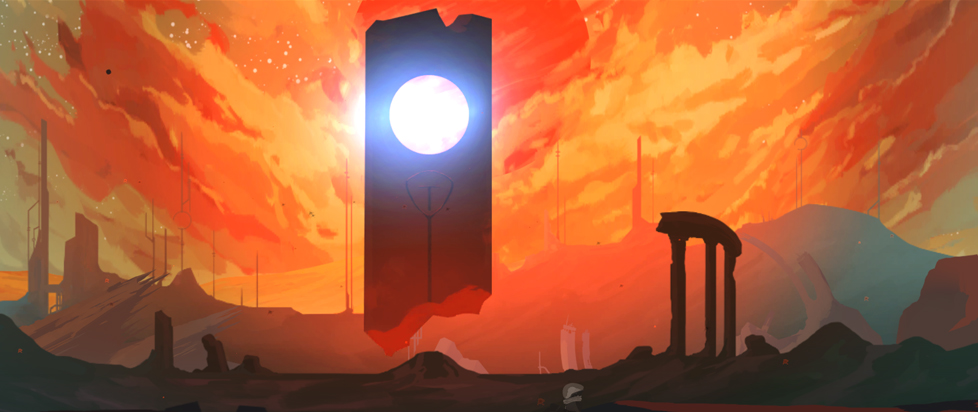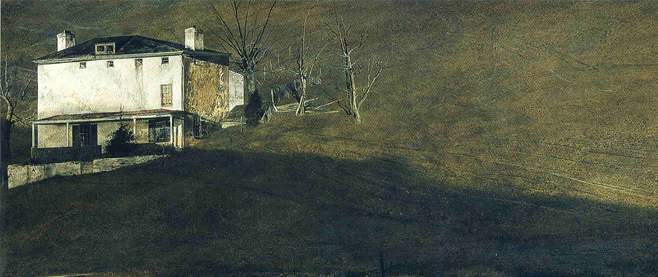
Consumption and Ruin
 Gavin Craig has a lot of games on his shelf that he’s never played. Backlog is his attempt to correct that.
Gavin Craig has a lot of games on his shelf that he’s never played. Backlog is his attempt to correct that.
———
This column is a reprint from Unwinnable Monthly #90. If you like what you see, grab the magazine for less than ten dollars, or subscribe and get all future magazines for half price.
———
I have two stories to tell about the games that I have been playing this month. One is about small games that do thought-provoking things with sparsely-populated digital spaces. The other I’m not so excited to tell, but that feels a bit more necessary, about a licensed media tie-in game packed to the gills with meaningless virtual trinkets that has been taking up all my time and that I’m thinking about running off to play right now.
The first story is about Proteus and Elegy for a Dead World, beautiful, lovingly crafted experiences that I thoroughly enjoyed, and that made me feel good about myself as a human being and a person who tries to be thoughtful about games. The second story is about Lego Harry Potter: Years 1-4, a game that I’m not even playing for the first time, and that I’ve completed in all but the most trivial of senses, but which I’ve repurchased and started from scratch as a repackaged and remastered re-release.
Proteus and Elegy for a Dead World are what I like to (fondly) call empty games. They are games that invest their energy in creating interpretive spaces as much as (or rather than) crafting a series of events to maintain player interest. Most games are built around doing – running, jumping, shooting, choosing, solving — but I’m fascinated by games that are built around being, or at least making the player think about what it is to be.
It isn’t difficult for a game world to be empty, but it’s a challenge to be interestingly empty, to open with emptiness as a point of possibility rather than to arrive at emptiness as a result of the exhaustion of possibility.
[pullquote]To stand in the face of a ruin is to consider not what to do but the paradox of futility and durability in the things that have been done. [/pullquote]
The latter, after all, is a pretty good description of the end state of a Lego videogame, which exists in a sense as an object of consumption to the exclusion of meaning. In contrast to a more conventional sandbox game, which usually offers some sort of an attempt at a story as well as a self-refreshing multiplayer experience in addition to a virtual space filled with an expansive but finite checklist of tokens and tasks, Lego media tie-in titles normally start under the assumption that you’re fully aware of the story it recapitulates. There’s a bit of light humor, but the major movements and gestures are entirely predetermined. The joy, then, is in tearing that world apart, destroying objects in order to acquire new characters and the ability to destroy the few objects that are indestructible the first time through.
Elegy for a Dead World is a game built on the haunting energy of ruins — places that retain meaning despite (or because) of the fact that they have lost to ability to be of use and, while Proteus places the player in a largely natural environment, the experience of exploring that environment is invigorated by the player’s discover of a handful of unnatural objects. “Nature” of course has to be placed in brackets in a digital environment like Proteus, but the things that Proteus does tend to revolve around the things that in the outside world tend to act as evidence of directed human activity — a house, semi-anthropomorphic figures, standing stones.
To stand in the face of a ruin is to consider not what to do but the paradox of futility and durability in the things that have been done. It is humility in the face of things done in the distant past that cannot be entirely replicated. Ruins create meaning through the impossibility of absolute comprehension. The human mind abhors a vacuum, so we fill it with mystery.
To play a Lego game, on the other hand, is to create a ruin, to inhabit a space and eliminate the possibility of use. It is to know completely what there is to be known, and to destroy it in that knowing. I wonder sometimes what it would be to encounter a Lego game for the first time with a completed save file. Would its opacity convey any of that sense of wonder, or is there not quite enough of the ineffable in its crafting?
After all, even after Lego Harry Potter is entirely consumed, virtual students still walk the halls of Hogwarts, costumed re-enactors occupying but not enlivening a recreated space. It is enduring and futile, but not empty, capable of being reassembled but not resurrected.
———
Gavin Craig is a writer and critic who lives outside of Washington, D.C. Follow him on Twitter @CraigGav




